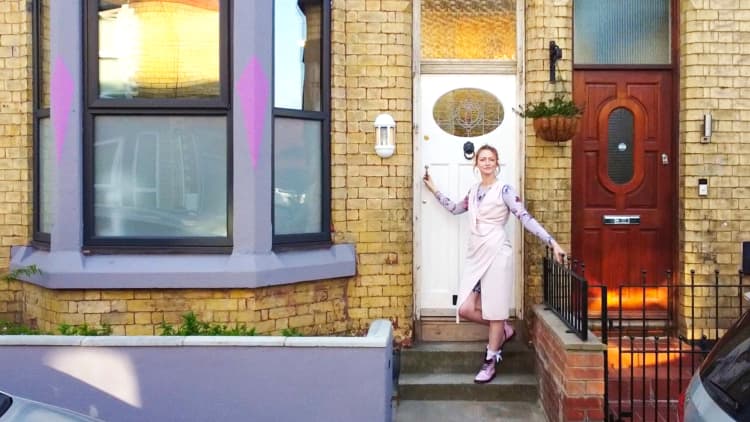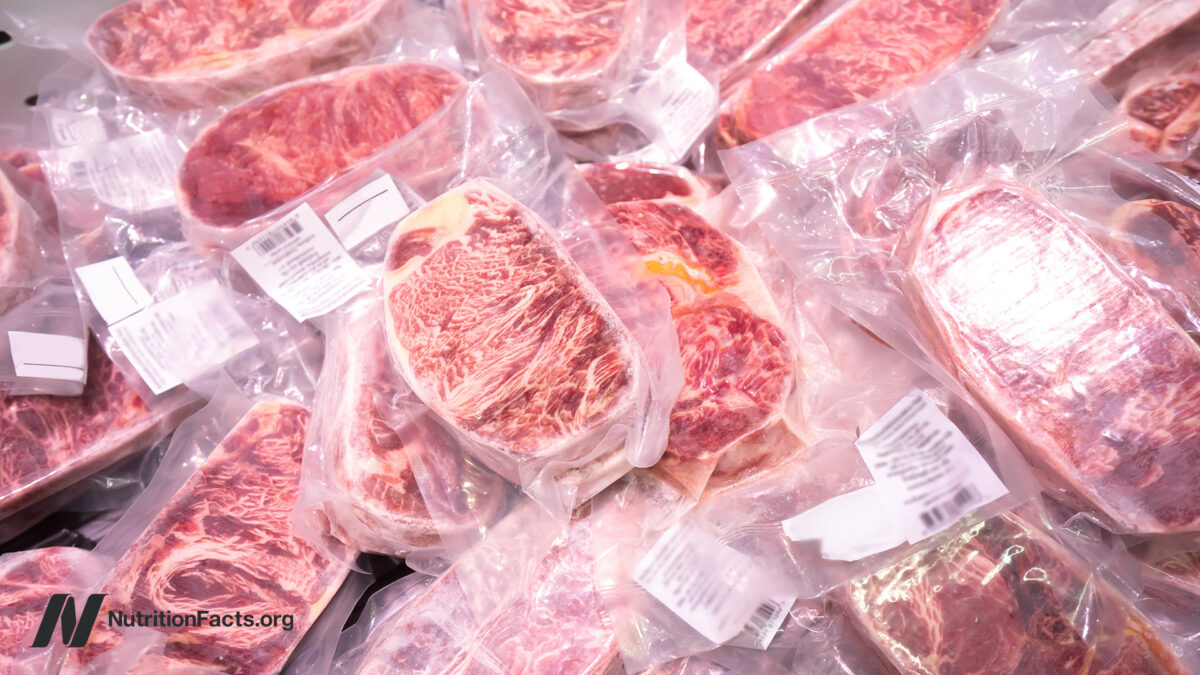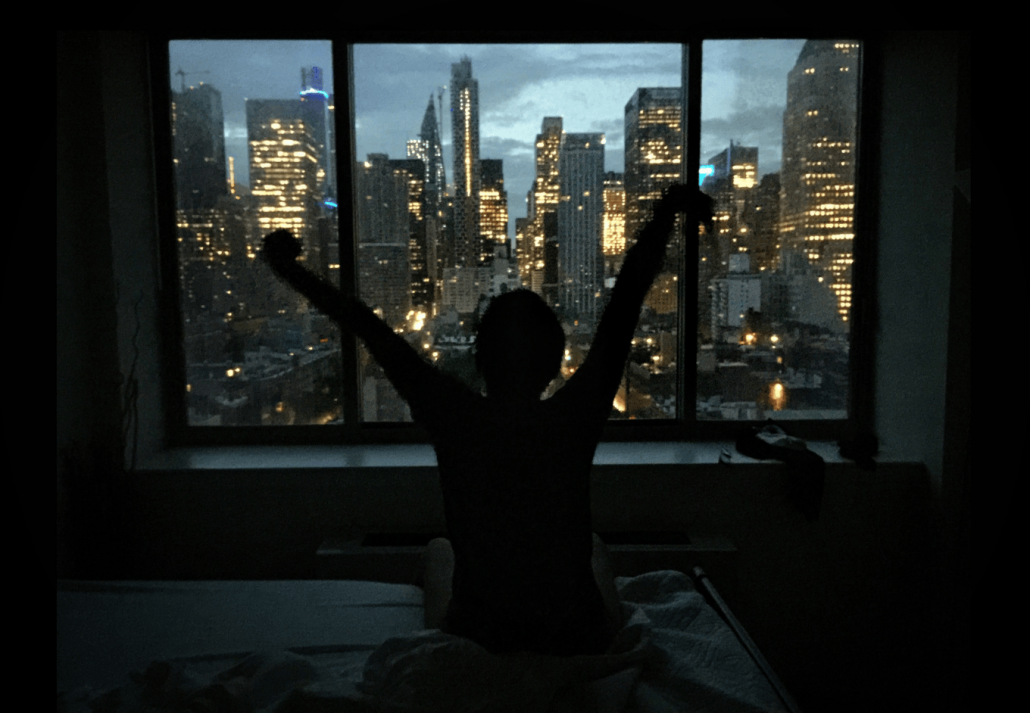I live in a backyard 'tiny home on wheels' for $725 a month—here's why I'm the happiest I've ever been
After her divorce, Jen Gressett ditched her large 4-bedroom house and built a tiny home on wheels. Now she pays just $725 a month — and she's never been happier.

In 2018, when my marriage of 18 years ended, I moved out of my 4-bedroom, 3-bathroom, 3,000-square-foot house and began the search for a new home.
The places I looked at were out of my budget, so I had to get creative. When I saw a trend of tiny houses on social media, I realized it could be a great way to get the luxury space I always wanted at an affordable price.
Today, I live in a 520-square-foot tiny home on wheels that I built for $175,000. I pay $725 a month in housing costs, which covers my parking space (in the backyard of someone's home), internet, water and electricity.
Overall, it cost me around $175,000 to build the home, which included the prefabricated shell structure, labor and material costs.
Photo: Sean Farney for CNBC Make It
At first, my biggest worry was that I'd have to give up a large chunk of my belongings, since they wouldn't fit in the new space. But that concern quickly faded — and it's actually the No. 1 reason I'm happier than I've ever been.
Limited space makes me appreciate what I already have
After my now ex-husband and I sold our home in April 2019, I had to start purging my belongings. I had a walk-in closet full of clothes and shoes, but I quickly realized that I only wore about 30% of them.
So I went through my wardrobe, filled up eight large trash bags, and delivered them to Goodwill. To my surprise, I immediately felt a sense of relief. And to this day, I couldn't even tell you what I donated.
Since downsizing, my online shopping habits have changed. My biggest rule is that I don't buy anything unless I know exactly where I'm going to put it.
Photo: Sean Farney for CNBC Make It
When I lived in the bigger house, I'd constantly buy things that I never ended up using. I'd hang on to some of them for years — just in case I might need them one day. They took over drawers and spare closets. Our basement looked like a junk yard.
The soaker tub is one of my favorite parts of this tiny home.
Photo: Jen Gressett
Now that I have less space, I no longer compulsively throw things in the shopping cart. If I know I don't have a place to put it, I simply won't buy it.
This mindset shift has not only saved me money, it has helped me feel more gratitude and take even better care of my things.
We installed pull-out cabinets in the kitchen and added lots of hidden compartments in the loft stairs.
Photo: Jen Gressett
I replaced constant online shopping with buying local
I've become more thoughtful about where I buy things that I do need. I love shopping on Amazon, but each little item arrives inside a package, which is inside bubble wrap, which is inside a box. All of these things take up space in my home and trash bins.
I used to wheel a dumpster-sized trash can to the curb once a week. Now I have a 13-gallon kitchen trash can and a 13-gallon recycling bin. That's it.
My kitchen counter extends into a round, built-in dining table, where I also do my work as a freelance designer.
Photo: Jen Gressett
I try to buy small items locally, even if they sometimes cost more, to cut down on packaging. It feels good to support small businesses and eliminate the wasteful packaging.
If what I need is only on Amazon, I'll wait until I have a few items in my cart before placing the order.
Making the bed takes less than a minute. I just sit up, straighten the pillows, and fluff up the comforter.
Photo: Jen Gressett
I have space to entertain, and way less of it to clean
I loved hosting guests in my 3,000-square-foot home, which had a great open floor plan. But it also meant endless hours of mopping, vacuuming and putting things back into place.
I love having my kids stay over. One of our favorite things to do is cook together, especially homemade pasta.
Photo: Sean Farney for CNBC Make It
In my tiny home, less space means less cleaning and fewer things to organize and maintain. I designed my kitchen to be the largest part of the home, so I can still comfortably entertain up to five guests at a time. Cleaning is easy and takes no more than an hour.
Your tiny space can be whatever you want it to be. My best advice is to start by asking yourself where you spend most of your time, and focusing on that first.
Photo: Jen Gressett
When I began my tiny home journey, I struggled with the idea of having to downsize. But little by little, I became less attached to material things, which in turn gave me a sense of freedom I never expected.
I've learned to truly appreciate the meaningful things in life: time with my kids, space to breathe and meditate, and a home that is uniquely my own.
Jen Gressett is a Colorado-based graphic designer, copywriter, photo stylist and content creator. During her free time, she enjoys trail running, hiking, and training for races. Find her on Instagram, where she shares her tiny house living experience.
Don't miss:
This 28-year-old pays $62 a month to live in a dumpster he built for $5,000—take a look inside26-year-old pays $0 to live in a 'luxury tiny home' she built for $35,000 in her backyard—take a look insideThis family left the U.S. and bought an apartment in Portugal for $534,000—look inside their 400-year-old homeWant to be smarter and more successful with your money, work and life? Sign up for our new newsletter!

Get CNBC's free Warren Buffett Guide to Investing, which distills the billionaire's No. 1 best piece of advice for regular investors, do's and don'ts and three key investing principles into a clear and simple guidebook.

 Fransebas
Fransebas 







/Management/John%20Pelant%20232x232.jpeg?n=9404)
























